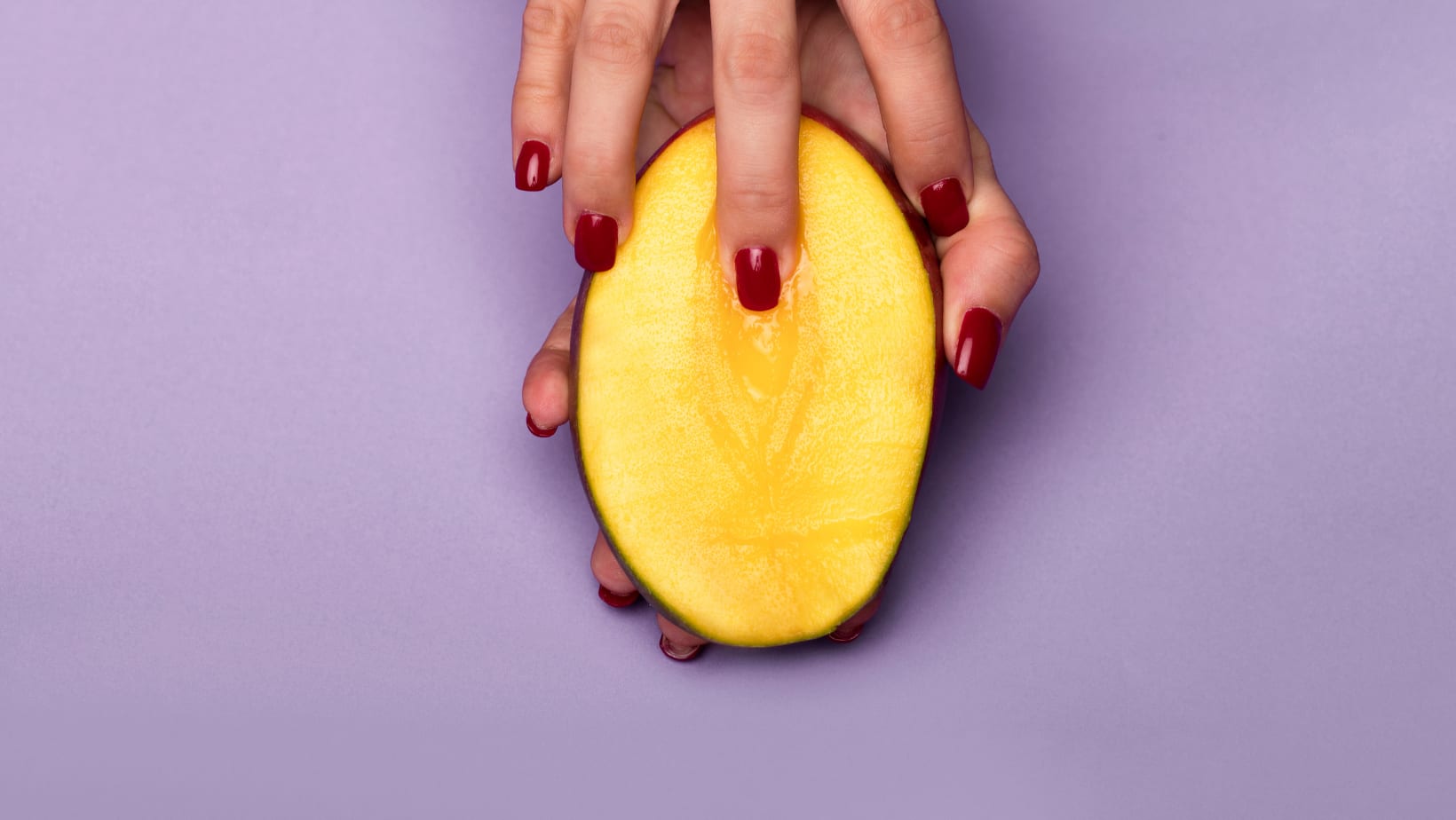4 masturbation myths busted

For as long as people have been jamming with their clam out and rocking with their cock out—as the case may be—there have been a whole slew of misconceptions surrounding masturbation. Luckily, most of the assumptions held about self-pleasure (no, it won't render you infertile, yes, women like it too, and no, it won’t kill kittens) have been heartily debunked over the years.
That being said, advanced though we may now be in our understanding of solo, non-procreative pleasure, masturbation myths remain pervasive—particularly in the anatomical arena.
Here, we present 4 common misunderstandings about masturbation to set the record straight (or curvy), once and for all.
1. The clitoris is a cute little button
Now, while there’s no doubt that the clit is indeed adorable to behold, and does indeed present as a ‘little button’ of sorts, when it comes to your clitoris, there is oh-so-much more than the meets the naked eye. Fact: the clitoris reaches far beyond the button perched atop your vulva: there’s a whole internal part of your clit which includes bulbous internal extensions and these sort of wings or branches on both sides—it kind of looks like a wishbone. Really, the clit in its entirety can reach up to 5.1 inches (the size of your average erect penis).
Not only can the internal branches of your clit potentially be stimulated externally, by rubbing/pressing your visible ‘button,' or massaging your labia, but the clitoris can also appreciate indirect internal stimulation from penetration (hint: the famed g-spot is part of your clitoral network!). Bottom line: it’s all connected, and it’s all good: the orgasm hierarchy is not a thing.

2. Orgasm type is defined by the area you stimulate
While few people today will dispute that there are at least 7 different kinds of stimulation that can result in orgasm (clitoral, vaginal, blended, g-spot, and anal are the tip of the iceberg!), there’s a lot less talk about actual types of orgasm. In other words: actual ways of classifying orgasms that are not anatomy-based. Well, worry not, because a recent study has confirmed that there are, in fact 3 orgasm types, and they can be classified as “wave,” “volcano,” and “avalanche.” Fittingly elemental, some would say.
A wave orgasm is when waves of tension and release ebb and flow via the pelvic floor muscles (the most common type). An avalanche orgasm is when the pelvic floor has steep, high tension which then crashes back down during climax (the second most common type). Finally, a volcano orgasm is when the pelvic floor maintains a low ’n steady tension before ‘erupting’ at the end (the least common type). Now that you know, you know. Often enough, knowing is feeling, after all.
3. G-spot stimulation is pretty straightforward
We live in an age in which discussing how to find your g-spot is fast becoming par for the course, and that is cause for celebration. Many people now understand that the g-spot can be stimulated via internal "come hither” motion tickling with the fingers, with g-spot vibes, and even externally, via clitoral stimulation. In fact, as previously mentioned, when you're stimulating the g-spot, you're stimulating part of the clitoris, which is much larger than we were once led to believe. That being said, far fewer people understand that it is also possible to provide extra g-spot stimulation via Kegel exercises or even by pressing on your stomach!
For Kegel g-spot stimulation, take notice of the sensations as you clench your muscles. This may be easier with Kegel balls or an insertable toy, as it can be easier to identify the clenching sensation around a solid object. Each time you squeeze, you may feel a gentle rumble radiating from your vagina up through your clitoris, and with each squeeze, your Kegel balls will gently rock against your g-spot. A divine way to both strengthen your pelvic floor and get off at a whole other level, nam sayin’? And then there’s TikTok's viral above-the-waist g-spot technique: when you put pressure on your lower abdomen above the pubic bone, thereby pushing on your bladder, you’re also pushing on your g-spot just below it. Just as internal pressure on this area can intensify pleasure, so too can external pressure. You might experiment with stimulating your g-spot from the outside and the inside by inserting a finger or toy simultaneously.

4. The main purpose of Kegels is to tighten your vagina
When Kegel exercises were first popularized, they garnered attention for their ability to “tighten” the vagina, and possibly intensify orgasms. The major misconception, of course, being that “tightening” the vaginal muscles is possible or even desirable. In reality, Kegels are focused on the pelvic floor muscles that surround the vagina rather than the vaginal muscles themselves, and on strengthening rather than tightening. While you can 100% practice Kegels discreetly with zero accoutrements, the use of Kegel balls can make it easier.
Why integrate Kegels into your masturbation routine, you ask? For one, it feels good, and can stimulate your g-spot—and if you’re wearing Kegel balls, merely having them inserted can be arousing. Thanks to improved blood circulation and a greater ability to contract and relax your muscles, stronger, easier orgasms are also a thing. It’s precisely this greater control of your muscles that makes for a “tighter” feeling during sex. With greater control also comes better bladder control, faster vaginal recovery post-pregnancy, overall vaginal rejuvenation, increased natural lubrication, and prevention of vaginal prolapse. Hot tip: do Kegels before or during orgasm and you may start to notice a change in your experience of climax.
Bottom line: chances are high that when it comes to the anatomy of (self) pleasure, there will always be something more to learn. Pretty exciting, right? <3